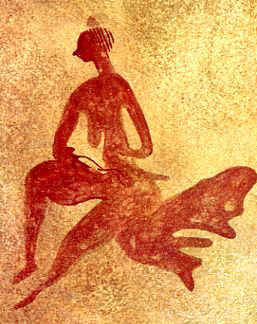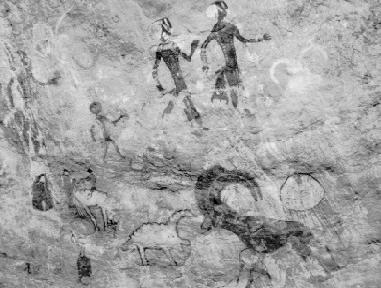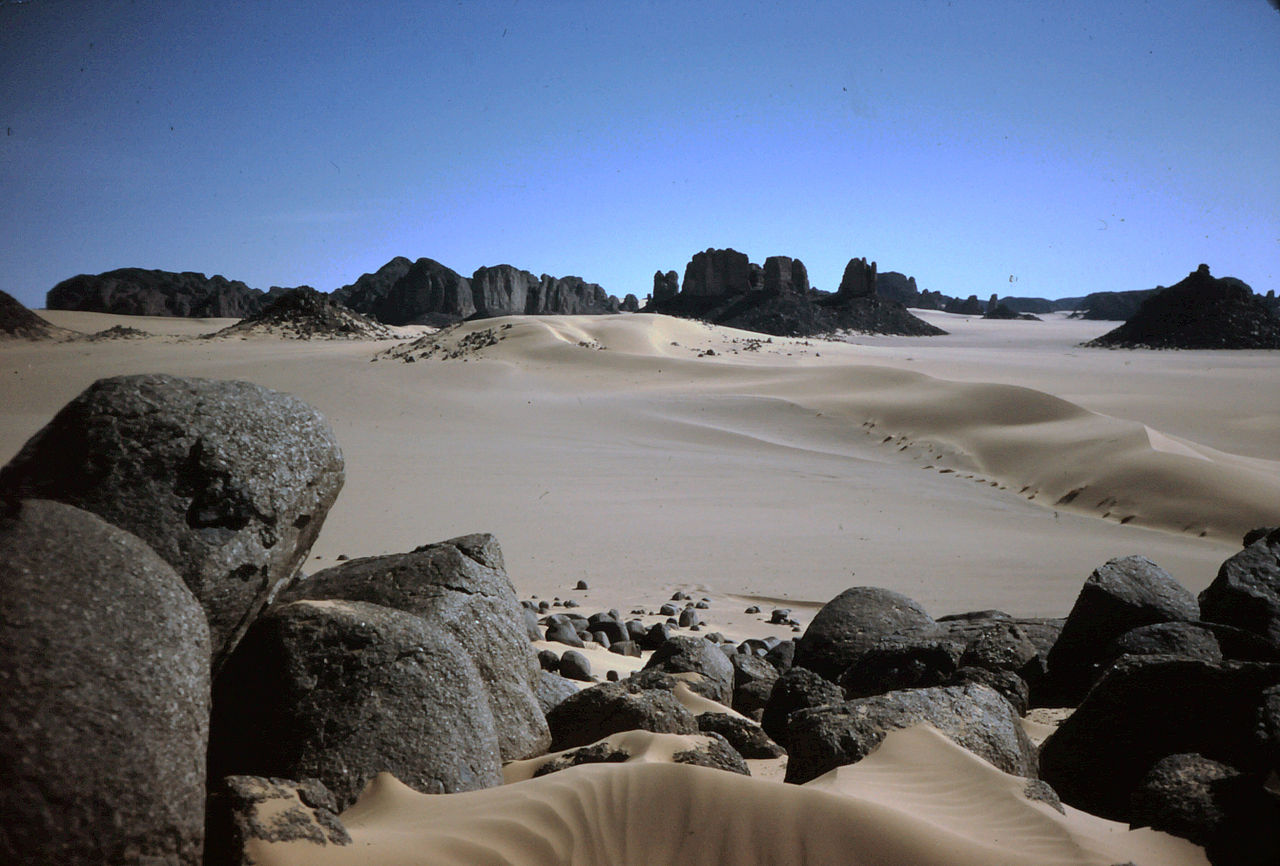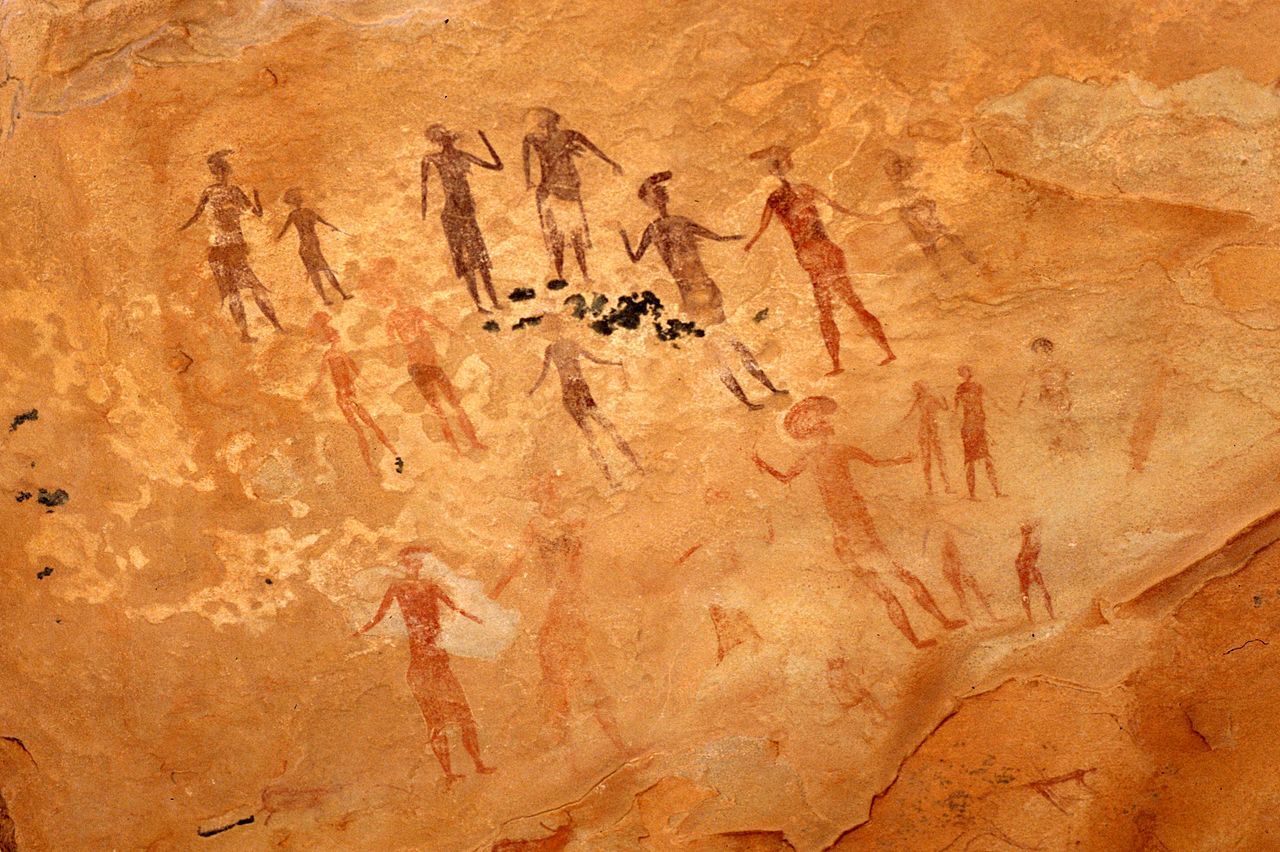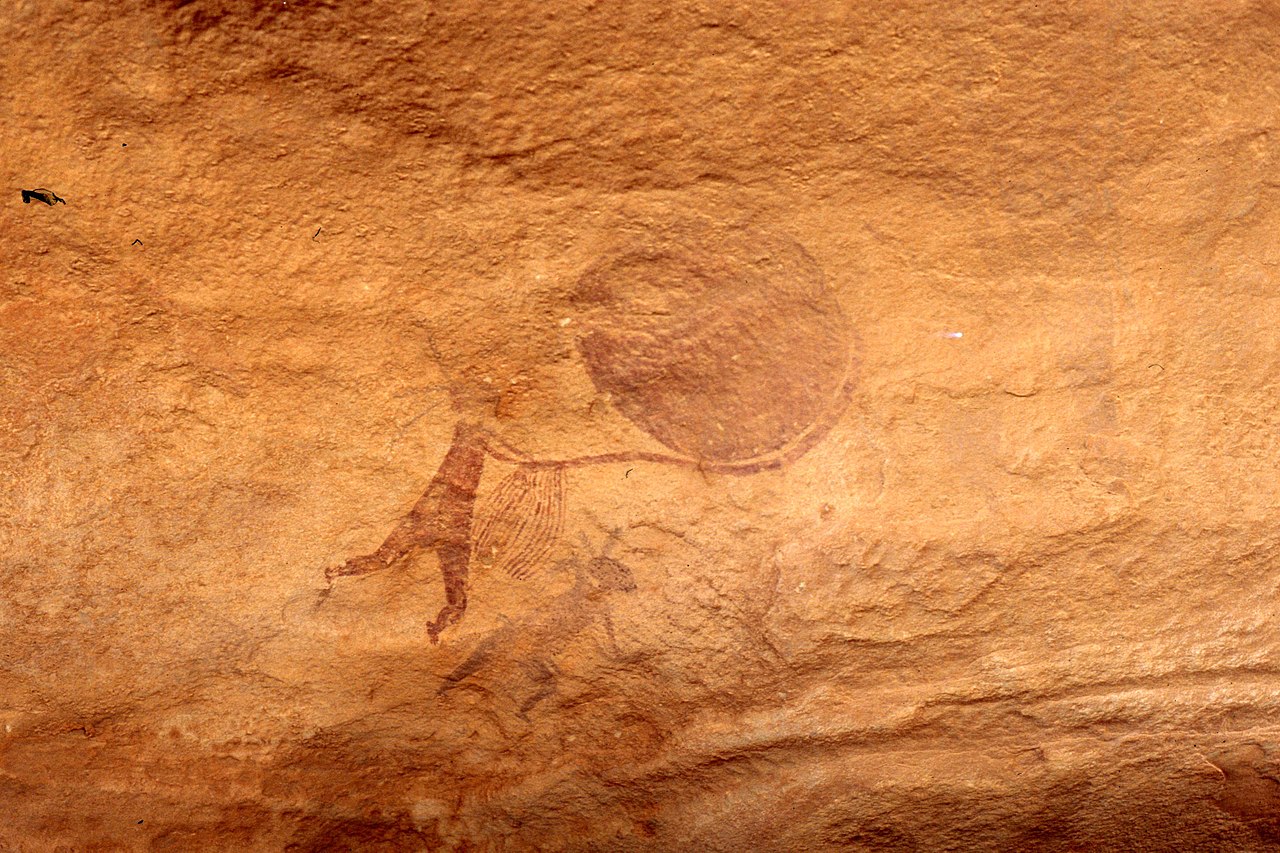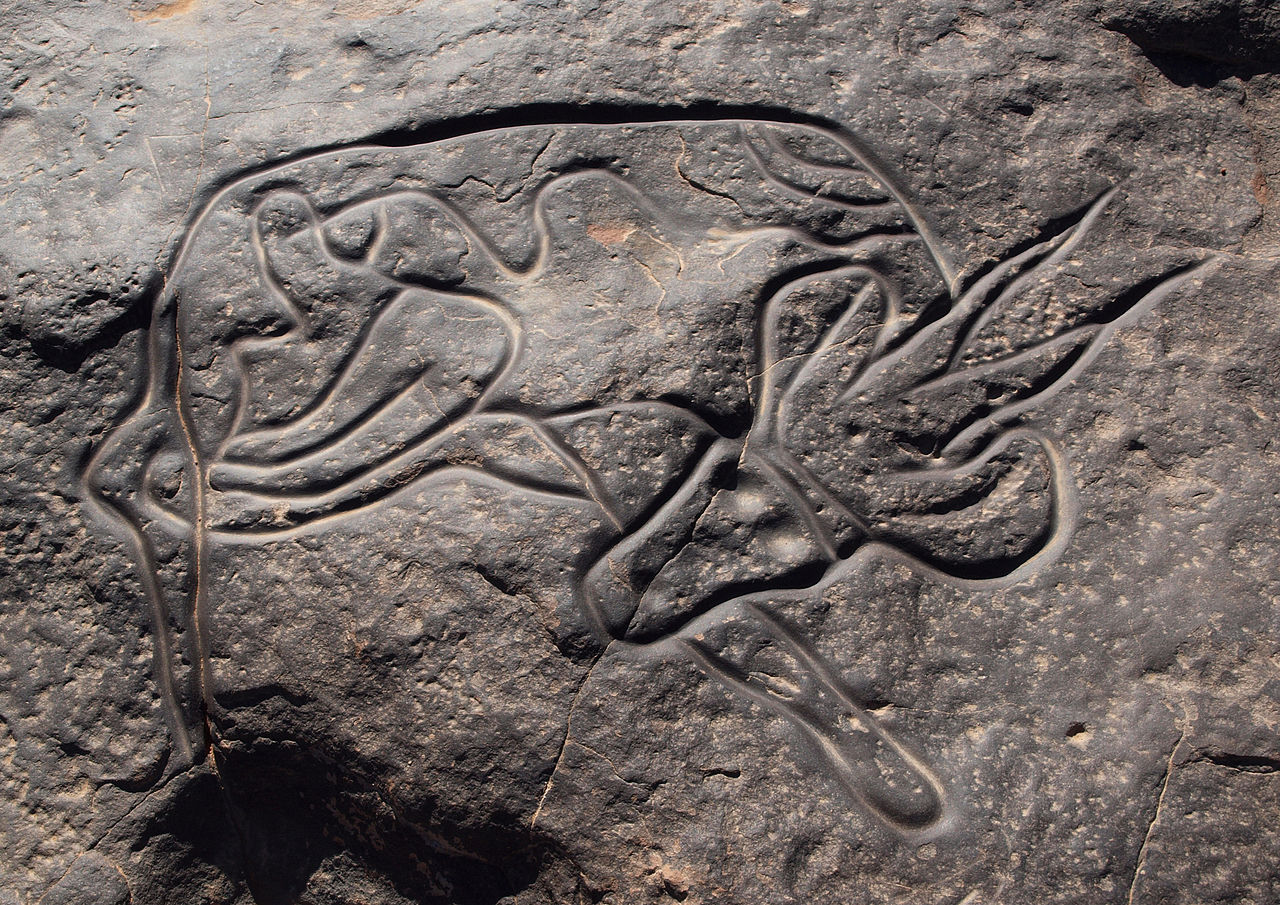Tassili n'Ajjer
Tassili n'Ajjer (Berber: Tasili n Ajjer; "Plateau of the Rivers") is a national park in the Sahara desert, located on a vast plateau in south-east Algeria. Having one of the most important groupings of prehistoric cave art in the world, and covering an area of over 72,000 km2 (28,000 sq mi).
The rock formation is an archaeological site, noted for its numerous prehistoric parietal works of rock art, that date to the early Neolithic era at the end of the last glacial period during which the Sahara was a habitable savanna rather than the current desert. Although sources vary considerably, the earliest pieces of art are assumed to be 12,000 years old. The vast majority date to the 9th and 10th millennia BP or younger, according to OSL dating of associated sediments. Among the 15,000 engravings so far identified depicted are large wild animals including antelopes and crocodiles, cattle herds and humans that engage in activities such as hunting and dancing. According to UNESCO, "The exceptional density of paintings and engravings...have made Tassili world famous." Tassili n'Ajjer was inducted into UNESCO's World Heritage Site list in 1982.
Examination of these rock paintings suggests the presence of proto-Fulani cultural traits in the region by at least the 4th millennium BCE. Scholars specializing in Fulani culture believe that some of the imagery depicts rituals that are still practiced by contemporary Fulani people. At the Tin Tazarift site, for instance, historian Amadou Hampate Ba recognized a scene of the 'lotori' ceremony, a celebration of the ox's aquatic origin. In a finger motif, Ba detected an allusion to the myth of the hand of the first Fulani herdsman, Kikala. At Tin Felki, Ba recognized a hexagonal carnelian jewel as related to the Agades cross, a fertility charm still used by Fulani women. There are also details in the paintings which correspond to elements from Fulani myths taught during the initiation rites like the hermaphroditic cow.
The Fulani initiation field is depicted graphically with the sun surrounded by a circle lined up with heads of cows as different phases of the moon at the bottom and surmounted by a male and a female figures. The female figure even has a hanging braid of hair to the back. Though no exact dates have been established for the paintings they are undoubtedly much earlier than the historic times when the Fulani were first noticed in Western Sahara.
This page uses materials from Wikipedia available in the references. It is released under the Creative Commons Attribution-Share-Alike License 3.0.
References